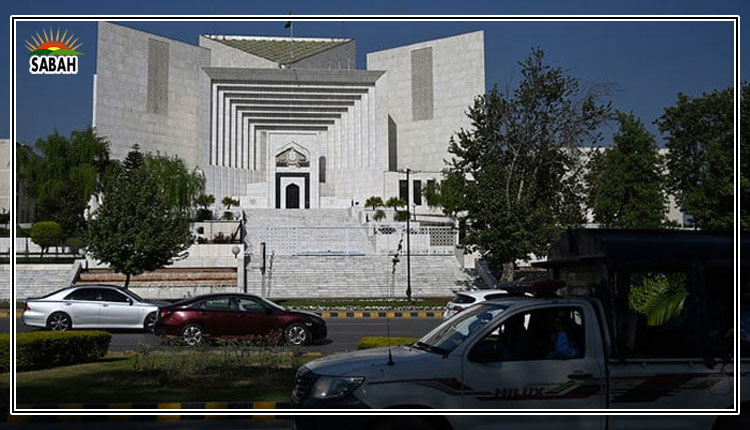Climate risk analysis……Noman Ur Rashid
With COP27 in the books, Pakistan has witnessed a ray of light, a chance to turn adversity into opportunity. This can be a 210 million euros opportunity that the flood-stricken South Asian nation can leverage to shield itself from extreme climate events.
The Global Shield against Climate Risks initiative launched by the G7 and the Vulnerable 20 (V20) countries has identified Pakistan as one of the Pathfinder Countries, providing it an opportunity to access pre-arranged disaster financing for climate-induced disasters.
Such an opportunity can prove to be a lifeline for a country like Pakistan which is currently facing an extreme liquidity crunch in the wake of the recent catastrophic floods. The inability to secure requisite financing for its rehabilitation and reconstruction efforts has led to an ineffective response to the worst calamity in the countrys history.
The sheer scale of destruction is best reflected in the recently published Post Disaster Needs Assessment, carried out by the government of Pakistan and international development agencies. As per the official figures, Pakistans cash-strapped economy is currently facing a $14.9 billion reconstruction & rehabilitation challenge, equating to more than 1.5 times the countrys overall development expenditure of $10 billion. It is pertinent to mention that this figure only exhibits the costs associated with reconstructing the damaged infrastructure in the vulnerable pre-flooding state.
However, the science of Post Disaster Reconstruction & Rehabilitation emphasizes incorporating Building Back Better principles that require the reconstructed infrastructure to be significantly more resilient than the one it replaces. Considering Pakistans climate vulnerability, undertaking such a Flood-resilient Rehabilitation and Reconstruction Process would cost an additional $1.3 billion thus inflating the overall rehabilitation and reconstruction costs to $16.2 billion.
The situation has left Pakistans policymakers searching for answers as to how the other countries, especially the developed world of the Global North, respond to the financial implications of extreme climate events. After all, no country is immune to the adverse impacts of climate change in todays world. The answer to this question lies in having effective Country-level Climate/Disaster Risk Financing Mechanisms in place that enable these countries to access large amounts of financial reserves in case of a cataclysmic climate-induced disaster.
An effective climate/disaster risk financing mechanism generally comprises a three-layered approach that involves: risk retention where less severe economic losses are financed through ad-hoc budgetary reallocations and contingency funds. Then theres risk transfer where moderately severe economic losses are financed through risk transfer solutions such as risk insurance or the issuance of catastrophe bonds. Third is residual risk mitigation where highly severe economic losses that are beyond the financial capacity of a country are financed through international humanitarian assistance.
The problem with Pakistans traditional risk financing approach is that it solely relies on risk retention and residual risk mitigation measures while neglecting the most critical step of risk transfer altogether.
This situation leaves the country with essentially two unviable options to respond to the economic repercussions of natural calamities: 1) bear the financial costs through the governments existing resources (which are non-existent considering Pakistans current economic outlook); or 2) rely on international humanitarian assistance by making flash appeals in case the financial impact is beyond the governments capacity (Pakistan, in addition to the initially secured $132.7 million, has so far received only 21 per cent $174.8 million against an international flash appeal of $816 million)
The situation calls for policymakers immediate attention towards the climate risk transfer solutions that can be best employed in Pakistans geographical, meteorological, and economical context. So far, Pakistan does not have a Climate Risk Financing Strategy and National Adaptation Plan at the national level, which has left the government clueless about covering the reconstruction and rehabilitation costs of this climate emergency.
The Global Shield initiative aims to address these basic policy-level challenges by supporting Pakistan in formulating its first-ever Climate Risk Financing Strategy and National Adaptation Plan. These strategies/plans will subsequently form the basis of effective risk transfer solutions that Pakistan can access to reduce its fiscal vulnerability to extreme climate events in the future. In addition, the initiative aims to improve Pakistans climate risk analysis and expand its social security systems so that those affected can better cope with climate shocks.
While Pakistans pathway to achieving fiscal resilience to climate-induced disasters through the much-welcomed Global Shield seems to be quite uncomplicated on paper, it might unravel differently in reality. Its success hinges on how swiftly and effectively Pakistan comes up with a long-term Climate Risk Financing Strategy and a National Adaptation Plan. If it fails to do so, it would continue being a climate vulnerable economy that keeps appealing for international aid every time a disaster strikes.
Courtesy The News












